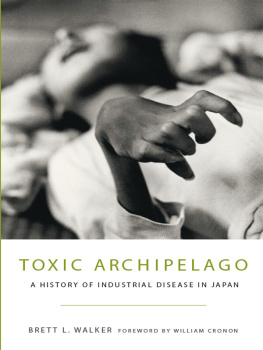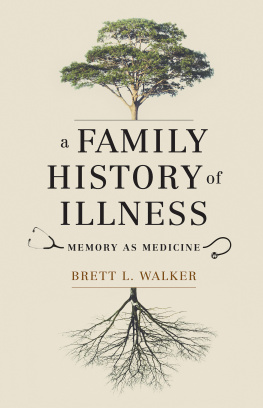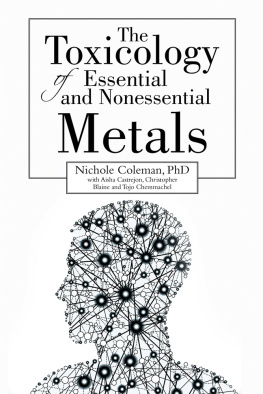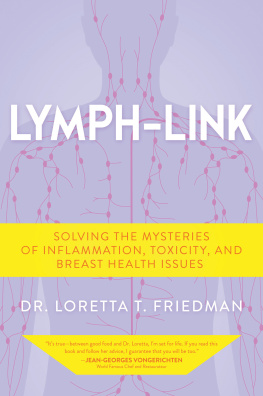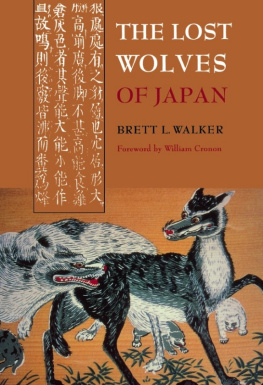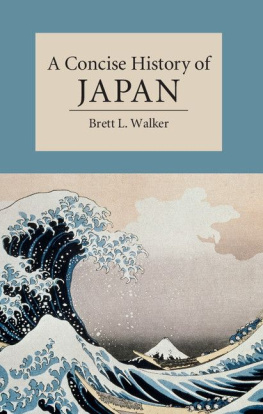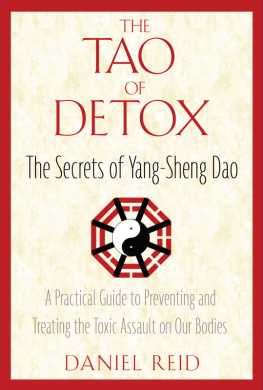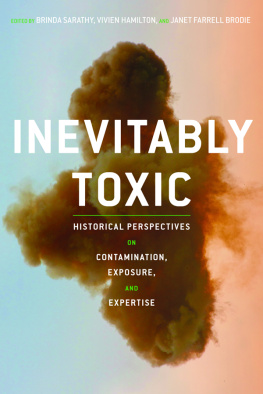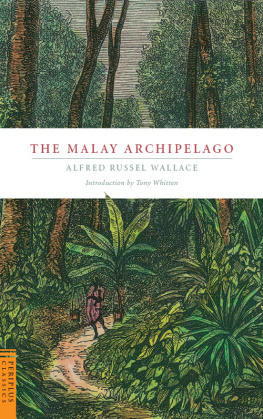Weyerhaeuser Environmental Books explore human relationships with natural environments in all their variety and complexity. They seek to cast new light on the ways that natural systems affect human communities, the ways that people affect the environments of which they are a part, and the ways that different cultural conceptions of nature profoundly shape our sense of the world around us. A complete listing of the books in the series appears at the end of this book.
TOXIC ARCHIPELAGO
A HISTORY OF INDUSTRIAL DISEASE IN JAPAN
BRETT L. WALKER
FOREWORD BY WILLIAM CRONON
UNIVERSITY OF WASHINGTON PRESS
SEATTLE AND LONDON
The Toxic Archipelago: A History of Industrial Disease in Japan is published with the assistance of a grant from the Weyerhaeuser Environmental Books Endowment, established by the Weyerhaeuser Company Foundation, members of the Weyerhaeuser family, and Janet and Jack Creighton.
2010 by the University of Washington Press
Printed in the United States
Designed by Pamela Canell
15 14 13 12 11 10 5 4 3 2 1
All rights reserved. No part of this publication may be reproduced or transmitted in any form or by any means, electronic or mechanical, including photocopy, recording, or any information storage or retrieval system, without permission in writing from the publisher.
University of Washington Press
PO Box 50096, Seattle, WA 98145, USA
www.washington.edu/uwpress
Library of Congress Cataloging-in-Publication Data
Walker, Brett L., 1967
Toxic archipelago: a history of industrial disease in Japan / Brett L. Walker.
p. cm. (Wewyerhauser environmental books.)
Includes bibliographical references and index.
ISBN 978-0-295-98954-9 (hardback : alk. paper)
1. Occupational diseasesJapanHistory.
2. Human ecologyJapanHistory.
3. JapanEnvironmental conditions. I. Title
RC963.7.J3W45 2010 616.9'8030952 dc22 2009037663
The paper used in this publication is acid-free and 90 percent recycled from at least 50 percent post-consumer waste. It meets the minimum requirements of American National Standard for Information SciencesPermanence of Paper for Printed Library Materials, ANSI Z39.48-1984.
ISBN 978-0-295-80301-2 (electronic)
FOR CLOSE FRIENDS
How delightful it would be to converse intimately with someone of the same mind, sharing with him the pleasures of uninhibited conversation on the amusing and foolish things of this world, but such friends are hard to find. If you must take care that your opinions do not differ in the least from those of the person with whom you are talking, you might just as well be alone.
Kenk, Tsurezuregusa (Essays in Idleness)
FOREWORD: THE PAIN OF A POISONED WORLD
BY WILLIAM CRONON
Among the historical phenomena leading to the rise of modern environmentalism in the second half of the twentieth century, one of the most striking was also one of the least visible: the proliferating presence of toxic compounds in the webs of ecological relationships that sustain life on the planet. What seemed like a new age of toxicity exploded into public view with the atomic bombs dropped on the Japanese cities of Hiroshima and Nagasaki in 1945, followed in turn by countless nuclear tests and the radioactive fallout they generated. As background levels of radiation rose during the 1950s and early 1960s, people around the globe became increasingly concerned that the foods on which they and their children depended were laced with contaminants like Strontium 90 and Cesium 137. In the early years of the Cold War, the enemy within symbolized the peril posed by communist agents (and organized criminals) capable of infiltrating and undermining national institutions, but the metaphor gradually extended to include other forms of infiltration and contamination as well. Rachel Carson's Silent Spring in 1962 brought those fears into sharp focus. Environmental toxicity was hardly limited to radiation: the intentional use of poisons to control pests, she argued, was having devastating effects as toxins accumulated in the bodies of fish, birds, mammals, and human beings.
Although Carson's intervention might suggest to Americans that concern about toxicity first arose mainly in the United States, in fact this transformation in environmental thinking was world-wide. Japanese concerns about radiation and nuclear weapons made that nation a leader in pointing the way toward a new era. A year before Silent Spring was published, a mysterious wave of birth defects in the United Kingdom and elsewhere was linked to the new drug thalidomide, so that images of newborn babies with missing limbs joined the victims of Hiroshima as sinister icons of the havoc that toxic exposures can wreak. Whereas an earlier era had habitually looked to science and technology for solutions to social and environmental problems, by the 1960s these agents of progressthe scare quotes around that word are themselves symptomatic of the new eraseemed as often as not to cause those problems. For a generation growing up in the shadow of the mushroom cloud, the idea that one's own body might harbor the poisonous seeds of future cancers and birth defects became a potent source both of nightmares and political activism. In the history of human fear, the post-Hiroshima age was haunted by new forms of hidden terror that were all the more frightening for lurking so invisibly beneath the bright sunlit surfaces of everyday life.
What was new, though, was less the poisons themselves than the public awareness of their presence. To be sure, radioactive fallout was peculiarly a product of the nuclear age and the widespread use of organic compounds as pesticides were an innovation of modern chemistry. But before DDT was used to control insects, it had precursors, like copper sulphate and lead arsenate, whose biological effects and long-term accumulation in the environment were hardly benign. Factories and mines had been generating toxic by-products world-wide long before World War II, so to really understand the rise of environmental toxicity one has to go much further back in time, to the dawn of the industrial era.
This is what Brett Walker has done in Toxic Archipelago, his disturbing new history of industrial disease in Japan. The book's argument is deceptively simple: toxicity was an inevitable outcome of cultural innovations that viewed nature as a resource waiting to be exploited toward useful human ends. The Enlightenment rationality that enabled scientists and engineers to break natural substances and productive processes into their component parts made possible efficiencies and economies of scale that would have been unthinkable to earlier generations. The benefits were obvious: dramatic increases in material outputs of all manner of goods and services,from foods to textiles to machines. The costs were often not so visible, concentrated as they were in the vicinity of individual factories or so diffuse that they could not easily be detected by unaided human senses. Every industrial product, Walker argues, also had by-products, unwanted materials that were inherent to production but undesirable in and of themselves and so were destined for release into environments that seemed capable of diluting or absorbing them without much harm. Or so people thought.
In a series of horrifying case studies, Walker applies his analytical lens to episodes involving different forms of pollution at different moments in the Japanese past: organophosphate pesticide contaminations in agricultural districts; toxic tailings and effluents at the Ashio copper smelter; methylmercury-contaminated shellfish and other marine organisms off the coast of Minamata; asthma-inducing chemicals from the Yokkaichi petroleum refinery; and the all-too-descriptive it hurts, it hurts disease caused by toxic waste from the Kamioka lead and zinc mines. Walker's tightly focused narratives of what happened in these placesand his accounts of his own efforts to uncover the toxic legacies of landscapes he has explored himselfenable him to put human faces on events that might otherwise seem abstract and remote, so far from the lived experience of non-Japanese readers that they might be tempted to regard this book as having little relevance to their own lives.

